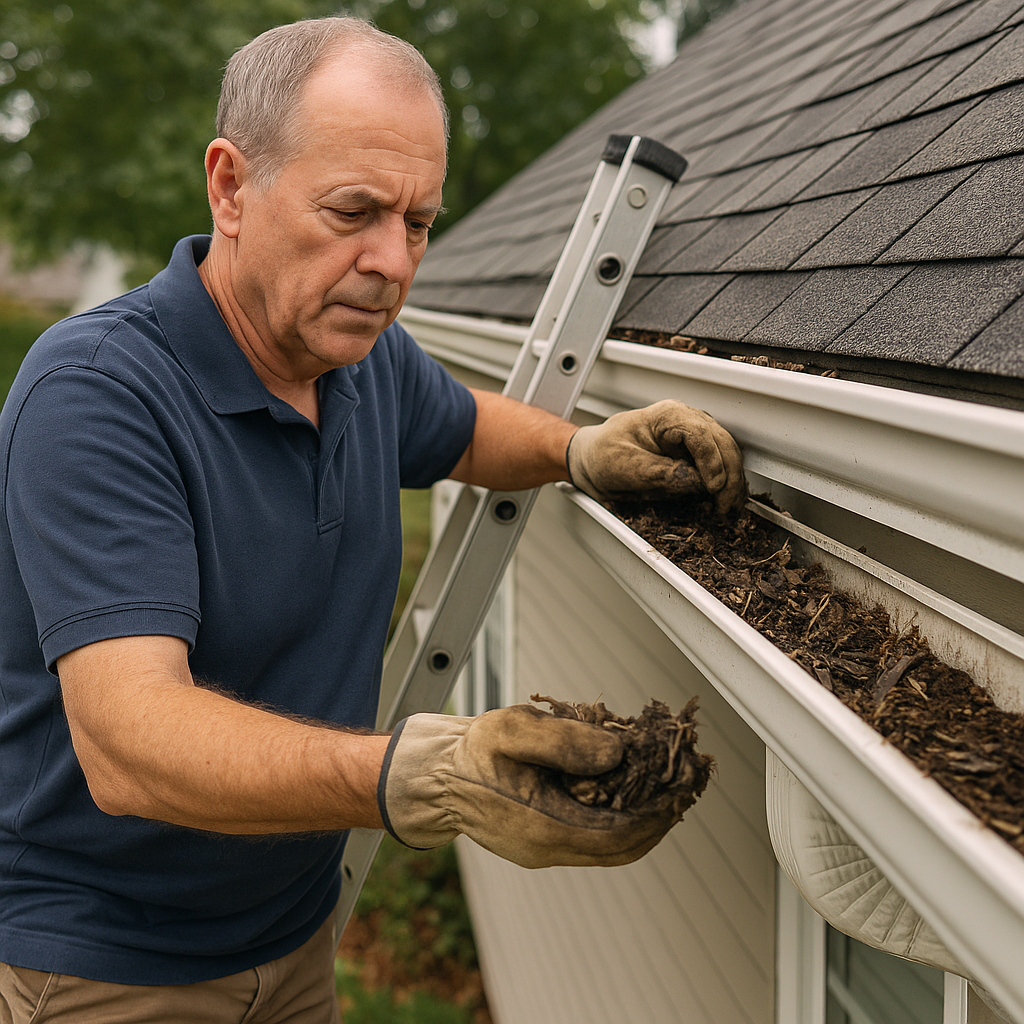Water damage is one of the most common and costly issues homeowners face, often from overlooked exterior maintenance. While structural problems and roof leaks are obvious concerns, improper drainage around the home can be just as damaging. Preventing water intrusion starts with understanding how water flows around a structure and addressing potential weak points before issues arise.
One of the most effective ways to safeguard a home from water damage is to keep gutters clean and well-maintained. When functioning correctly, gutters direct rainwater away from the roof and foundation, reducing the risk of leaks, erosion, and basement flooding. Blocked or damaged systems can lead to water pooling near the home, weakening structural components, and creating long-term moisture problems that affect safety and indoor comfort.
 Importance of Gutter Maintenance
Importance of Gutter Maintenance
Regular gutter maintenance is essential for protecting your home from potential water damage. When gutters are clogged with leaves, dirt, or debris, water can overflow and seep into the foundation, roof, or siding, leading to costly repairs. Keeping gutters clean ensures that rainwater is directed safely away from the structure. One effective way to reduce buildup and the frequency of cleanings is to use gutter guards, which help minimize debris accumulation while allowing water to flow through. A well-maintained gutter system supports the overall health of your home and prevents long-term moisture issues caused by poor drainage.
Consequences of Neglecting Gutters
Ignoring gutter maintenance can set off a chain reaction of adverse outcomes for your home. As organic debris and dirt pile up, water gets trapped or redirected in ways never meant to flow. Here are the primary hazards that arise when this crucial task is forgotten:
- Roof Damage: Blocked gutters prevent water drainage, causing moisture to seep below shingles, softening and rotting the roof. This could lead to indoor leaks and damage to ceilings, insulation, and electrical systems.
- Foundation Issues: Water runoff near the home’s base increases the risk of settling, cracks, and basement dampness, which can compromise structural integrity over time.
- Pest Infestations: Clogged gutters with standing water attract mosquitoes, insects, birds, rodents, and squirrels, which can expand into attics or walls, causing damage and health risks.
- Mold and Mildew: Poor drainage leads to ongoing moisture, which fosters mold growth on siding and inside walls or attics. This impairs air quality and exacerbates allergies or asthma.
Best Practices for Gutter Maintenance
Gutter care does not have to be an arduous or overwhelming process. By incorporating a few simple practices into your annual home checklist, you can significantly reduce the likelihood of future water problems:
- Regular Cleaning: Make it a point to clear your gutters of leaves, needles, or dirt twice a year, or more often if your neighborhood is surrounded by trees. Spring and fall are the best times, as seasonal weather tends to bring the most debris.
- Inspection: While cleaning the gutters, look for warning signs like small cracks, rust spots, sagging areas, or loose nails and brackets. Fix these minor issues early to prevent further damage.
- Downspout Maintenance: Don’t forget about your downspouts. Make sure they are not blocked and extend far enough from your home to drain water safely. If needed, add splash blocks or flexible extenders to direct water away from vulnerable spots.
- Gutter Guards: Think about adding gutter guards or leaf screens to your system. These protectors help prevent clogs and reduce cleaning needs by blocking debris, making maintenance easier and more effective all year round.